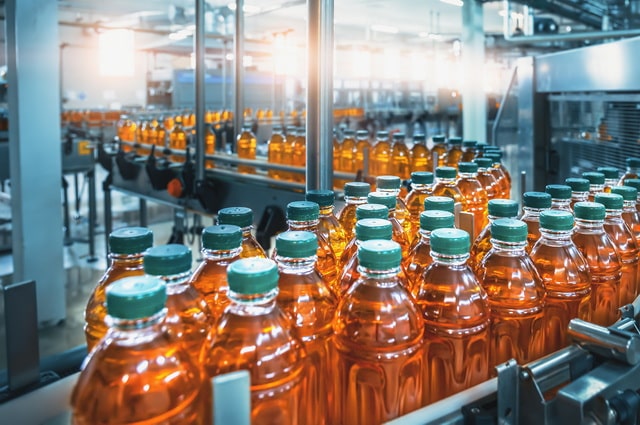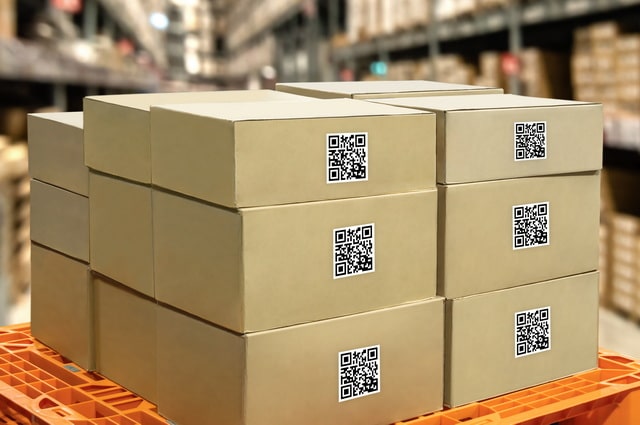As a manufacturer, your products are critical to the modern way of life in one way or another, including to the economy. In fact, it contributes $2.77 trillion to the U.S. economy annually, with an impact of $2.68 to the economy for every $1.00 spent in manufacturing. But errors do happen during manufacturing, and the consequences are almost always costly. With consumers demanding more transparency from the companies they buy from, manufacturers are under a lot of pressure to boost their visibility.
You need insight into where your raw materials come from, how goods route through your plant, and how they end up in customers’ hands. Regardless of your industry, you need manufacturing traceability. We’ve created this guide to give manufacturers an understanding of traceability, why it matters, and best practices to help you succeed at traceability. We’ll discuss:
First, let’s take a closer look at what traceability is.
Manufacturing traceability includes the processes, systems, and tools you use to track where your goods are. This includes everything from the moment you receive raw materials to when you either sell them to the customer or dispose of them. It’s an established practice in certain industries, such as food production and medical device manufacturing. As more industries realize the benefits of traceability, it’s becoming a widely implemented practice across the entire manufacturing sector.
While your exact processes will likely differ, manufacturing traceability usually happens with a few simple steps:
With traceability, you get eyes on every part of your processes. You collect and manage data on your materials and products during the manufacturing process — and even upstream and downstream stages of the product journey, too. Traceability solutions make it a cinch to verify if your shipments made it to the customer or if there are issues with a specific lot number.

Manufacturing traceability is a must for modern manufacturers, but there are actually several ways to conduct traceability, including:
Once you can track ingredients, parts, and products during the manufacturing process, you’ll get a bird’s-eye view of your business. While traceability has been practiced by some industries for years, such as medical device manufacturing, defense, and food production, it’s becoming a valuable tool for automotive, electronics, and other industries, too.
Regardless of your customer base, traceability helps manufacturers:
Traceability might initially sound overwhelming, but it’s an incredibly beneficial tool for manufacturers in any industry. But how do you get the most value out of your traceability processes? Follow these eight traceability best practices to boost visibility across your factory.
What problems should traceability solve?
It’s great to implement traceability, but you need goals to determine if it’s actually effective. That might mean creating KPIs and goals for:
It’s a good idea to benchmark against your competitors as well as yourself. This will tell you what’s standard in your business and what, if anything, you need to correct.
It’s impossible to conduct traceability without some kind of technology in place. This might mean adding tech to streamline your processes, such as:
You never want to reuse codes or identifiers, especially within a short time. Every single asset needs a unique identifier. That might mean creating longer, more complex identifiers with numbers and letters, but this is crucial to keeping all of your lot numbers distinct from each other.
Every manufacturer gets to decide how they want to serialize their traceability solutions. You might choose a combination of:
You can also use QR codes to track your identifiers, which can still work if a piece is missing — and they also allow you to store more information in a small space.

It’s not always a good idea to put a QR code on a machine without any other context. What if your employees don’t have a device on hand to scan the code?
Occasionally, the humans in your factory will need to quickly access information by looking at a label or nameplate. They might need quick access to essential operating instructions, for instance, or they might need to access information about a vehicle, compliance information, equipment ratings, and other data. It’s great to give more detailed information upon scanning, but high-level information should also be printed below the code. This way, your team can still access basic information without scanning.
This is essential if you have a time-sensitive issue, like a recall. There’s less of a need to scan every single asset in the factory — just have your team look for assets matching the recall’s parameters and then scan them to verify the information.
Even if you’re using automation and technology in your factory, you rely on your employees to keep your business moving. That’s why it’s a good idea to train your employees on traceability, especially if you have to answer to regulators.
What are your standards? If you’re audited, you need your employees to feel confident that they’re fulfilling regulatory requirements. That’s why every manufacturer should train new employees as well as seasoned veterans on traceability processes. This will stamp out bad habits and ensure that everyone implements your processes with fidelity.
You must also document your processes if traceability systems are new to your organization. A Standard Operating Procedure (SOP) should systematically detail how your business implements traceability. This document should remove any ambiguity and serve as the go-to for any questions about traceability.
Of course, you’ll also need to update your SOP, so it’s actually useful. Ensure your team reviews SOPs at least twice a year to ensure they’re still accurate.

You don’t have to completely overhaul your manufacturing processes overnight. When implementing a new process like traceability, it’s better to start small, learn, and then expand from there.
Consider conducting a traceability pilot on a certain part of your production line or at one factory first. This will help your team gather data, learn what works (and what doesn’t), and iron out mistakes. Otherwise, you risk throwing your entire company into chaos by switching all of your processes at the same time.
Traceability holds so much promise for manufacturers, but if you’re required to satisfy regular audits, your traceability processes must also be compliant. Work with your legal team to look at your audit requirements: how can you ensure compliance with this new system?
Another way to look at this is to audit your current processes without traceability. Where are you falling short? How can traceability improve your business? This will help you get the most value possible from traceability without putting your business at risk.
If you use traceability software, chances are it’s not the only software used to run your business. The good news is that proper traceability software will integrate with all the other software tools you use, including your CRM or ERP. If you’re in a highly regulated industry like defense, choose from software solutions designed with the sector’s unique needs in mind.
Be sure to choose a traceability solution that integrates and pushes data to other software. By combining information from multiple platforms, you can make faster, better, and more informed decisions about your business as a whole.
Traceability has the power to make your manufacturing business more efficient. It might require upfront work to implement, but traceability can save you so many headaches in the long run that it’s well worth the effort.
But your traceability processes need reliable tagging to work properly. MPC’s durable tags and labels make it a cinch to label your equipment, scanners, machines, and other critical components with long-lasting codes that won’t fade. Request a free sample today.
Our sales engineers are experts in automatic asset tracking, tagging and identification,a nd can answer all your questions. Get in touch now.
Lets Talk ›